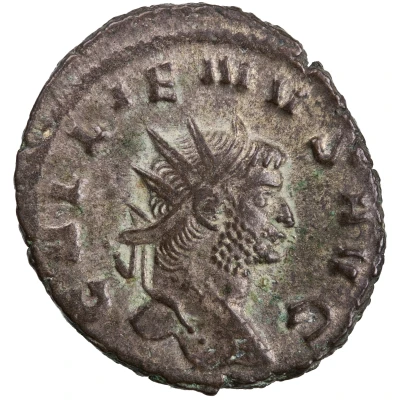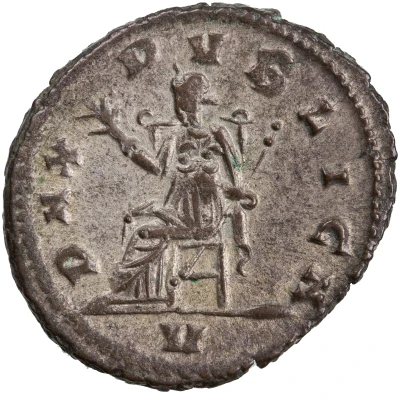Antoninianus - Gallienus PIETAS AVG
| Silver | - | - |
| Issuer | Rome › Roman Empire (27 BC - 395 AD) |
|---|---|
| Emperor | Gallienus (Publius Licinius Egnatius Gallienus) (253-268) |
| Type | Standard circulation coin |
| Years | 260-268 |
| Value | Antoninianus (1) |
| Currency | Antoninianus, Reform of Caracalla (AD 215 – 301) |
| Composition | Silver |
| Shape | Round (irregular) |
| Technique | Hammered |
| Demonetized | Yes |
| Updated | 2024-10-05 |
| Numista | N#288800 |
|---|---|
| Rarity index | 100% |
Reverse
Sacrificial implements.
Script: Latin
Lettering: PIETAS AVG
Translation:
Pietas Augusti.
Piety of the emperor (Augustus).
Comment
Source:Online Coins of the Roman Empire (OCRE)
Interesting fact
The Antoninianus, also known as the "Gallienus," was a coin introduced by the Roman Emperor Gallienus in 260 AD, during a time of economic crisis and political instability. It was made of silver, but its value was not based on the metal's intrinsic worth, but rather on the authority and credit of the Roman state. This coin was used to pay soldiers and civil servants, and it remained in circulation for over a century, until the fall of the Roman Empire in 476 AD. Despite its long lifespan, the Antoninianus experienced significant inflation over the years, and its value decreased significantly compared to its initial value.

